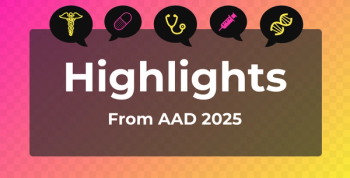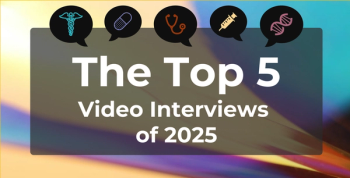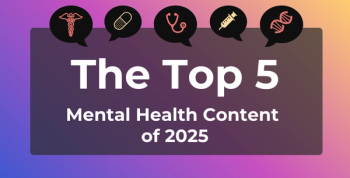
How Trump’s Trade Policy Could Raise Costs, Deepen Drug Shortages
Key Takeaways
- Tariffs on pharmaceuticals may increase drug prices and worsen shortages, particularly affecting generics due to their reliance on imported ingredients and thin profit margins.
- The US pharmaceutical supply chain's heavy dependence on imports, especially from China and India, heightens vulnerability to shortages if tariffs lead manufacturers to exit low-margin markets.
Experts say proposed pharmaceutical tariffs could raise drug prices, impacting patient access and health care budgets.
President Donald J. Trump’s proposed tariffs on imported pharmaceuticals could push US drug prices higher while worsening shortages of critical generics, experts have warned.1 Intended to boost domestic manufacturing and reduce reliance on foreign supply chains, the tariffs may instead strain hospitals, pharmacies, and managed care budgets in the near term.
Recap of Earlier Concerns
Earlier
This follow-up analysis examines how implementation timing, industry responses, and supply-chain vulnerabilities could shape patient access and costs in the months ahead.
Timeline and Industry Response
The implementation timeline remains uncertain. In response, several multinational companies have announced plans for domestic investments, although some experts question whether these moves represent long-term reshoring or short-term political signaling.3
Currently, the administration has paused Section 232 measures that would have affected generic drugs, which are also exempt under the EU trade agreement, explained Marta E. Wosinska, senior fellow, Brookings Institution, in an interview with The American Journal of Managed Care® (AJMC®).
“At this point, it doesn't look like we're going to have tariffs on generics,” said Wosinska. “A lot of the chemo drugs—the basic chemo—are generics. On the branded side, we already have the tariffs on drugs coming from the EU, and presumably, I think they're in place now. However, the administration has been negotiating [with] one company at a time, [saying] that if they do certain things, such as agree to lower prices and do direct-to-consumer [programs] or participate in TrumpRX, then they will be exempt from those tariffs.”
Impact on Generic Drugs and Patient Access
Generics are particularly vulnerable because they operate on thin margins and depend heavily on imported ingredients.2 Additionally, tariffs could increase out-of-pocket costs for patients, especially those in high-deductible or coinsurance plans, while potentially exacerbating disparities in access for Medicaid and Medicare populations.4
When asked about the impact of tariffs on patient access, particularly for low-income or high-need populations, Wosinska expressed concern that imposing tariffs on generic drugs could trigger shortages, whereas branded drugs are less vulnerable. She noted that manufacturers can absorb modest tariffs—around 15%—for political reasons, but extreme tariffs, such as 100%, could lead to price increases. However, Wosinska believes that manufacturers are unlikely to raise prices on high-margin branded drugs, such as those for cancer, due to political pressure and the profitability of these products.
“This is not a time to be raising prices when the President is looking at you,” said Wosinska. “If you have a high enough margin for branded cancer drugs, you will then just basically absorb it.”
Supply-Chain Vulnerabilities and Shortage Risks
The US pharmaceutical supply chain relies heavily on imports, with roughly 80% of APIs sourced from China and India.2 Tariffs could raise input costs, trigger retaliatory trade measures, or incentivize manufacturers to exit low-margin markets, increasing the risk of shortages.
Data show that there are 214 drugs in an active shortage as of late 2025.5 Hospitals and community health centers that rely on these medicines may face procurement challenges and higher costs, directly affecting patient care and managed care budgets.4
“Something that you will see in my work, especially around generic drugs, is that we do have a broken system,” said Wosinska. “The supply chain for generic sterile injectables is very fragile, and the carboplatin and cisplatin shortage really highlighted this.”
She explained that generic sterile injectables operate on thin margins and cannot absorb a 25% tariff without raising prices. However, Medicaid inflation rebates and the 340B program limit manufacturers’ ability to increase prices, creating a high risk that these drugs could become unavailable, potentially leading to critical shortages.
Branded Drugs Are Better Positioned but Still Exposed
Branded manufacturers generally enjoy higher margins and greater pricing flexibility, allowing them to absorb some tariff-related costs or accelerate domestic production.2 However, these measures are not without cost. Regulatory compliance, supply-chain restructuring, and potential trade retaliation from Europe or China could drive global price increases.3
Policy Alternatives and Managed Care Strategies
1. Identify Vulnerable Drugs: Conducting supply-chain vulnerability assessments for sterile injectables and high-utilization generics allows plans to anticipate shortages and implement contingency strategies, such as alternative sourcing or therapeutic substitutions.6
2. Plan for Pricing Volatility: Implementing tariff scenarios into formulary strategy and contracting models while preparing cost-sharing contingencies helps health plans model different pricing outcomes to determine which drugs may face sudden cost spikes and adjust co-pay structures or patient assistance programs accordingly.2
Wosinska emphasized that policy makers should focus on improving the resilience of the supply chain for generic sterile injectables. She noted that any proposal to strengthen supply reliability must contend with structural issues such as the Medicaid inflation rebate and 340B drug pricing program, which can undermine patient access.
"I think the conversation we need to be having is not how to unravel the whole program, but how to carve out those drugs where this program actually is backfiring for them and actually undermining patient access because it makes them so much more vulnerable [to] those supply chains,” said Wosinska.
References
1. Steinzor P. Trump tariffs on pharmaceuticals risk causing higher costs, drug shortages. AJMC. April 25, 2025. Accessed November 13, 2025.
2. Wosinska ME. Will pharmaceutical tariffs achieve their goals? Brookings. March 27, 2025. Accessed November 13, 2025.
3. Donnellan A. Big Pharma Trump toadying stores up bigger battles. Reuters. November 11, 2025. Accessed November 13, 2025.
4. Sullivan SD, Gruegar J, Sullivan AP, et al. The consequences of pharmaceutical tariffs in the United States. J Manag Care Spec Pharm. 2025;31(9):1090-1095.
5. Drug shortages statistics. American Society of Health-System Pharmacists. Accessed November 13, 2025.
6. Roades T, Colvill S, McClellan MB. Pharmaceutical tariffs: potential impacts and the need for vulnerability assessments. Health Affairs Forefront. March 26, 2025. Accessed November 13, 2025.
Newsletter
Stay ahead of policy, cost, and value—subscribe to AJMC for expert insights at the intersection of clinical care and health economics.







































